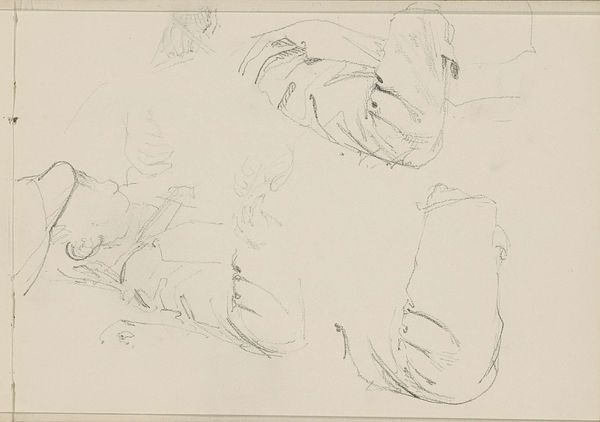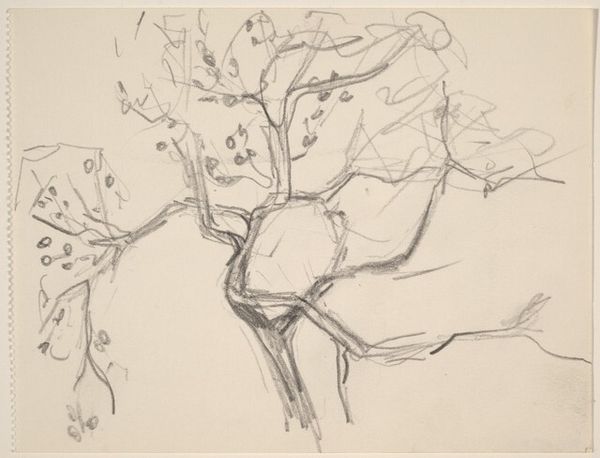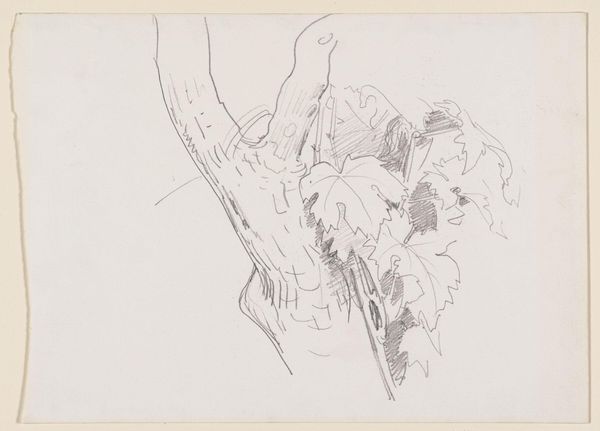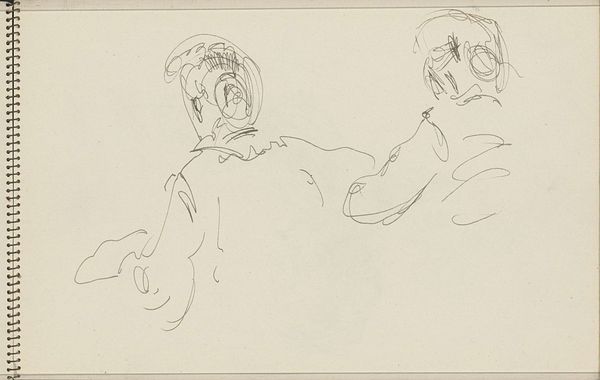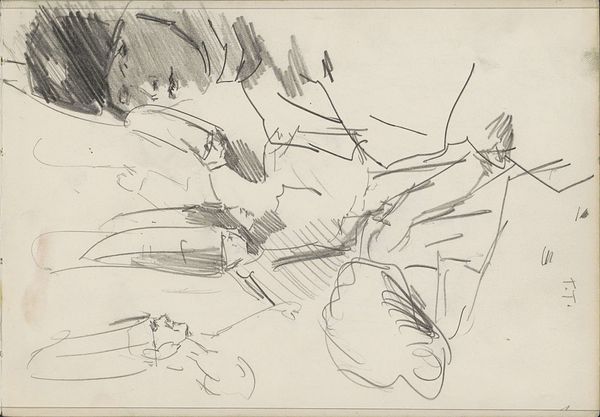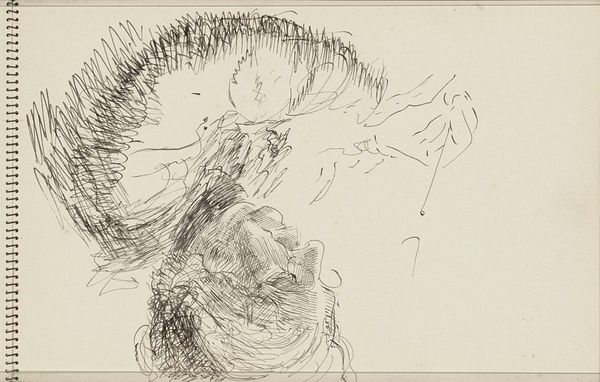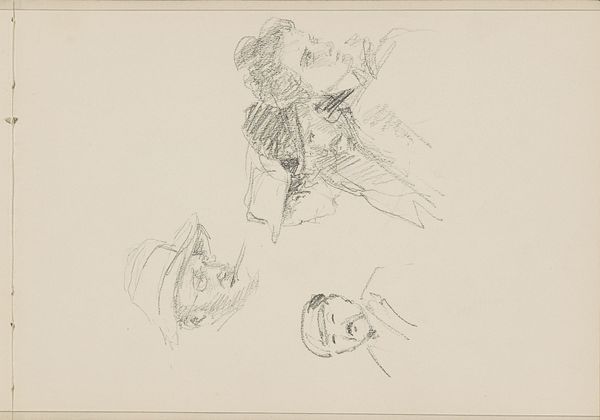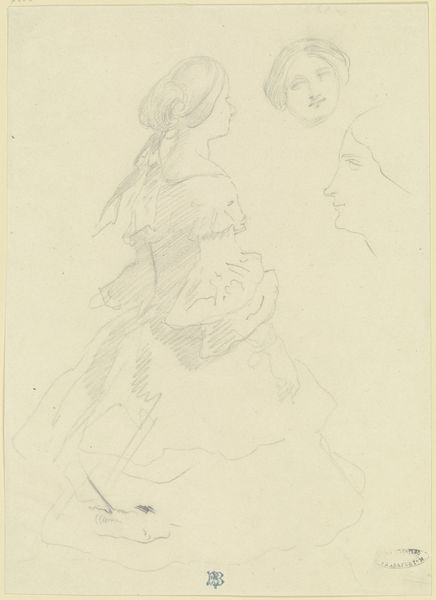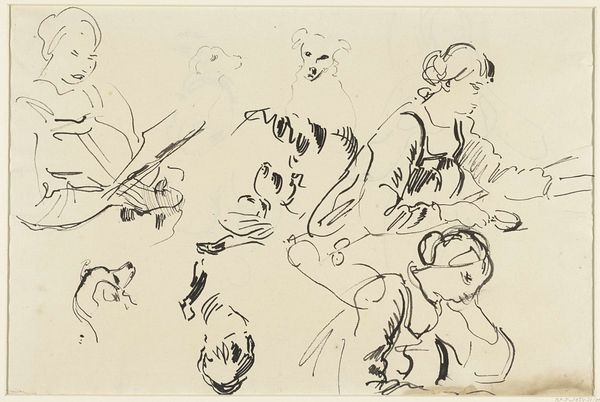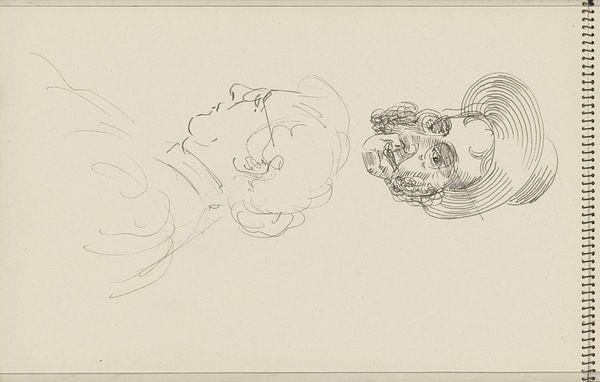
drawing, ink, pen
#
portrait
#
drawing
#
comic strip sketch
#
pen sketch
#
figuration
#
personal sketchbook
#
ink
#
idea generation sketch
#
sketchwork
#
ink drawing experimentation
#
pen-ink sketch
#
sketchbook drawing
#
pen
#
storyboard and sketchbook work
#
modernism
#
initial sketch
Copyright: Rijks Museum: Open Domain
Editor: Here we have "Portretten van Joanna Lion Cachet-Cordes," a series of sketches from around 1935 to 1940 by Carel Adolph Lion Cachet, rendered in pen and ink. They’re quick and gestural, almost like capturing fleeting thoughts. I’m immediately struck by the intimacy of the sketchpad – it feels very personal. What catches your eye in this work? Curator: It's precisely that sense of intimacy, as you point out, that intrigues me. We're essentially looking over the artist's shoulder, witnessing a very private moment of observation. But, historically, how does the *idea* of a "private moment" evolve and become a subject worthy of artistic exploration? Editor: That's a good point! Before mass media and photography, were such casual, almost throwaway sketches considered…art? Curator: Precisely. Consider the shifting social value of the sketch. Prior to the rise of modernism, sketches were often preparatory works. The public only saw the polished, finished piece. But as art began to embrace process over product, and especially with modernism's focus on individual expression, these glimpses into the artist's process became valued as independent artworks. The messiness and immediacy that you sensed became qualities to celebrate, not hide. This begs the question, how did the institutionalizing of "the sketch" change our understanding of artistic genius and access? Editor: Wow, I hadn't thought of it that way. So, by displaying this sketchbook page, the Rijksmuseum isn’t just showcasing the final product; it’s validating the artist’s process and inviting us to consider how artistic value is assigned and evolves over time. It changes my understanding of museums. Curator: Exactly. And how does the increased value affect other artists today?
Comments
No comments
Be the first to comment and join the conversation on the ultimate creative platform.



